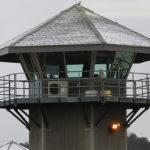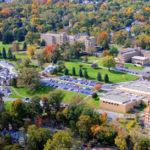Communicated Content – When you think of horse racing in Upstate New York and the Hudson Valley area, the Saratoga Race Course springs to mind. The track has been home to some major upsets and hugely important races during its annual program of summertime meet that lasts from July through to Labor Day.
There are still one or two misconceptions about Saratoga, and it could be argued that many are lacking in education surrounding this iconic venue. For example, it’s an urban myth, for example, that it is the oldest sporting venue in the USA. Even though standardbred horse races took place at Saratoga as far back as 1847, that still only puts it fourth eldest on the list behind Pleasanton Fairgrounds in California, New Orleans’ Fair Grounds Race Course, and the Freehold Raceway in nearby New Jersey.
The first thoroughbred horse race held here dates to August 3, 1863 just across Union Avenue from where the current track is. Saratoga Race Course moved to its current location the following year and has been in constant use except during 1896, 1911-12, and part of World War II ever since.
Where equine greats come to lose
Its reputation as the Graveyard of Champions was established a century ago when Man o’ War suffered a shock loss to an aptly named horse called Upset in the 1919 Sanford Stakes. Although this defeat came in his juvenile year and thus before Man o’ War truly took American dirt racing by storm, he had previously won at Saratoga and would never be beaten again in his storied career.
Even exceptional thoroughbreds that won the US Triple Crown have found themselves on the end of reverses at this track down the years. Gallant Fox encountered muddy conditions due to rainy weather that were his undoing in the 1930 Travers Stakes when 100/1 underdog Jim Dandy pulled off a stunning win.
That colt was only the second in American horse racing history to win the Kentucky Derby, Preakness, and Belmont Stakes. The Travers Stakes, named after famous Wall Street lawyer and Saratoga Race Course co-founder William Riggin Travers, is the oldest race with Grade 1 status run at the track and was first held in 1864.
Fast forward to 1941 and the great Whirlaway dodged the Travers curse that befell Gallant Fox to become the only horse in history to win both that and the Triple Crown. By this point, completing the “superfecta” of four major three-year-old races was considered a major achievement.
Not all stakes races run at Saratoga are conditions contests, and the Whitney Handicap of 1973 saw record-breaker Secretariat humbled. Big Red was beaten by Onion in an upset which reduced his legions of loyal followers he won after scintillating victories in the Triple Crown events to tears.
Even American Pharoah in more recent times came unstuck on the Saratoga dirt in the 2015 Travers Stakes when bested by Keen Ice. That was one of only two career losses for the horse who was crowned the winner of the Grand Slam of Thoroughbred Racing.
Variety is the spice of life
It’s not just about Flat horses at Saratoga, though. The course is now home to an inner turf track where steeplechases including the New York Turf Writers Cup are run.
Changes to the Saratoga program like these have come via the New York Racing Association (NYRA), which also operates Aqueduct Racetrack and Belmont Park. Formed in 1955, besides moving some of their organized jumps races to the course, the Woodward Stakes also switched here in 2006.
There are almost 20 Grade 1 events held at Saratoga Race Course in any given year now, and leading online bookmakers offer horse racing betting markets on them all. Belmont Park provides pretty stiff competition within the Empire State, but the NYRA are smart enough to hold meets at their two major tracks at different times of year.
The only thing that would really enhance Saratoga’s status and add to its prestige as a major place for horse racing would be to have the Breeders’ Cup World Championships at the track during the fall.
Aqueduct, Belmont Park and Monmouth Park in New Jersey have all had hosting duties before, although in recent years the end-of-year meet has either been held in two of America’s other thoroughbred hotbeds, Kentucky or California.






